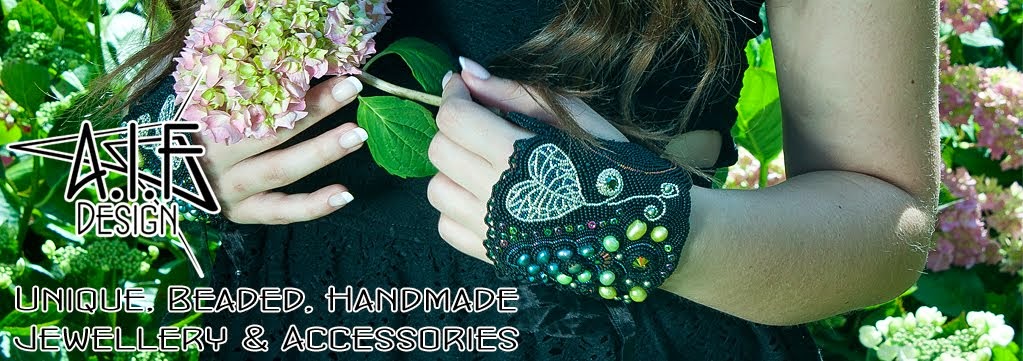 Needle Sizes
Needle SizesThe most common sizes of beading needles are size 10, 12 and 13, but there's also a size 15 beading needle which I haven't really come across myself from any of the suppliers I'm currently using. Therefore, I'm not sure how common the size 15 needles are.
Size 10 is the most common used needle all in all and it goes easy through 11/0 seed beads.
The size 12 beading needles are thinner then the size 10 (basically the higher the number, the thinner the needle) and can pass through beads a lot more often than the size 10. The size 12 can also pass through 15/0 beads a couple of times way easier then a size 10. Personally I recommend to work with size 12 while including 15/0 seed beads rather than a size 10 of the facts that that big a needle, if you force your way through the 15/0 seed bead, it will break the bead.
The size 13 beading needle can handle a lot more pressure then any of the other sizes, since it's so thin. So why wouldn't you just stick with size 13 and dump the other sizes? Because the size 13 beading needle isn't just thin, it is also very fragile. So depending on what kind of work you want to do, you should always consider the choice of size on the needle you want.
Why can't I use an ordinary sewing needle instead?
Simple; because the eye, where you thread your thread is normally way too big for passing through the beads, and the needles themselves are too thick. The beading needles are after all manufactured for the single purpose of working with beads.
Brands
I think, from my own experiences... The most common needles are the John James needles. They exist in sizes 10, 12 and 13 with a range of different length on the needles; short to very long (see photo). I've seen them on all the bead suppliers I've come across, so I'm just making the conclusion that they are the most common beading needles. From my own experiences, the short beading needles make a great way for bead embroidery when joining the backing together with the beaded surface, since they don't get crinkled so easily as a normal size needle.
 Last month I decided to try out some Miyuki Beading Beedles I saw on Perles & Co. for 2.50€ since I was curious to try my hands on something new. I could immediately feel the difference between the John James and the Miyuki needles while working with 'em. The Miyuki beading needles are a lot more harder and doesn't get crinkled as easily as the John James, which makes them last a lot longer. However, they did have some problems passing through more then twice through those 15/0's. The Miyuki beading needles arrived in a gift card "package" which also had a needle threader together with the 6 needles. There are also some simple instruction printed on the inside of it.
Last month I decided to try out some Miyuki Beading Beedles I saw on Perles & Co. for 2.50€ since I was curious to try my hands on something new. I could immediately feel the difference between the John James and the Miyuki needles while working with 'em. The Miyuki beading needles are a lot more harder and doesn't get crinkled as easily as the John James, which makes them last a lot longer. However, they did have some problems passing through more then twice through those 15/0's. The Miyuki beading needles arrived in a gift card "package" which also had a needle threader together with the 6 needles. There are also some simple instruction printed on the inside of it.The Bead Smith carry those big eye needles which comes in handy when threading your beads onto something that the small eye of an ordinary beading needle can't handle. I've been using them for passing elastic thread through beads when I've been wanting to make an elastic bracelet or something like that. Clearly you can use it for a lot though.



No comments:
Post a Comment